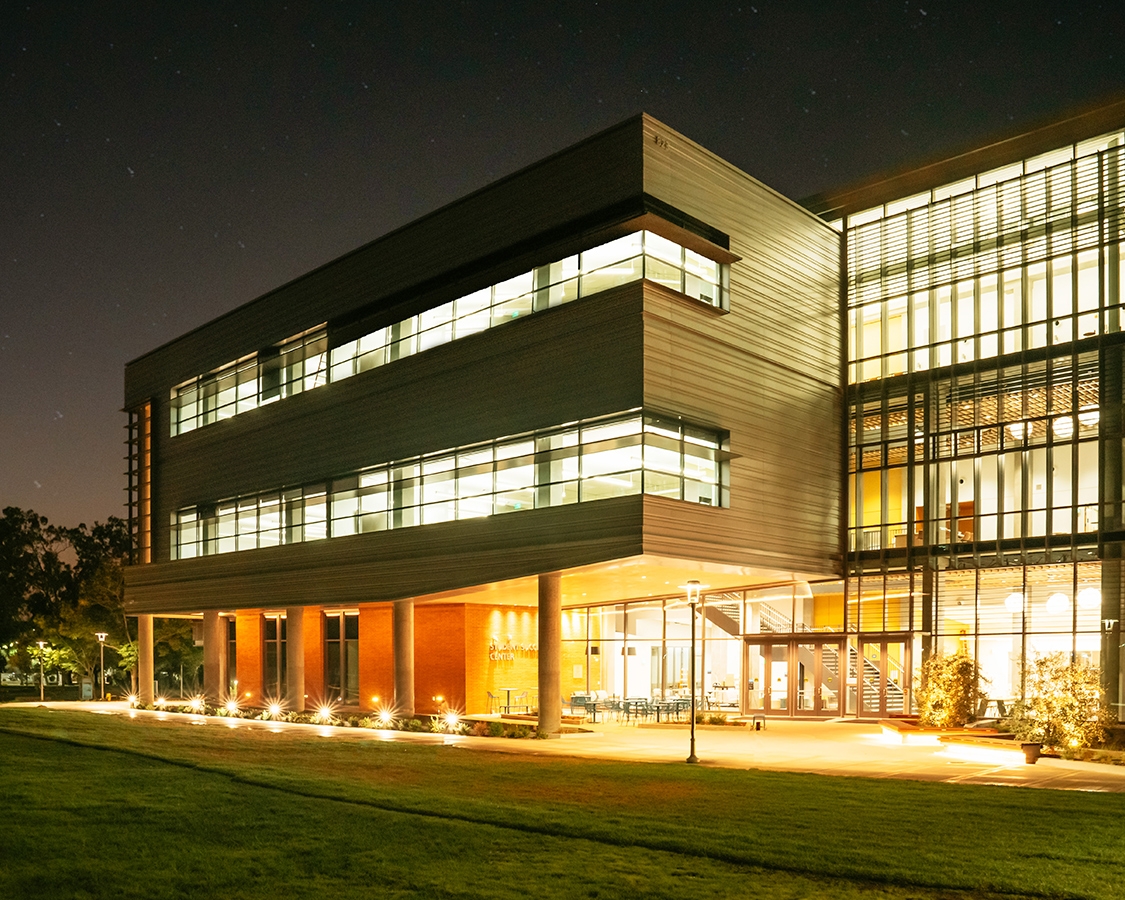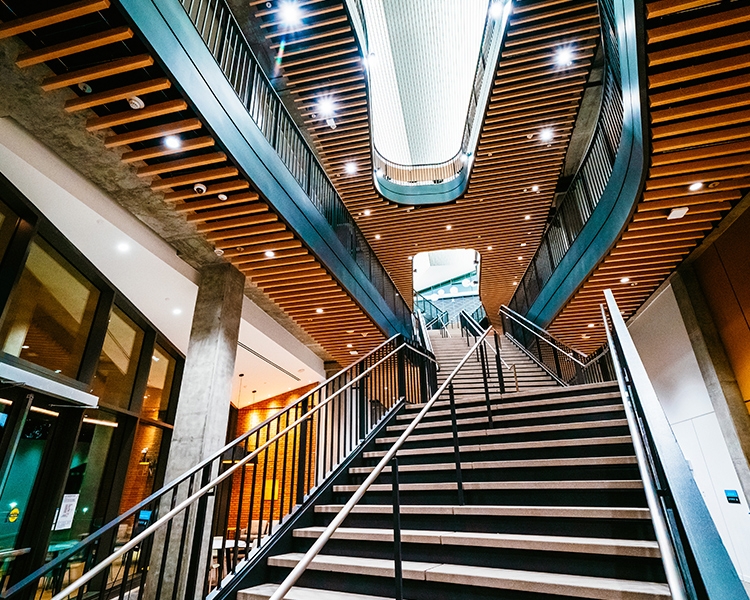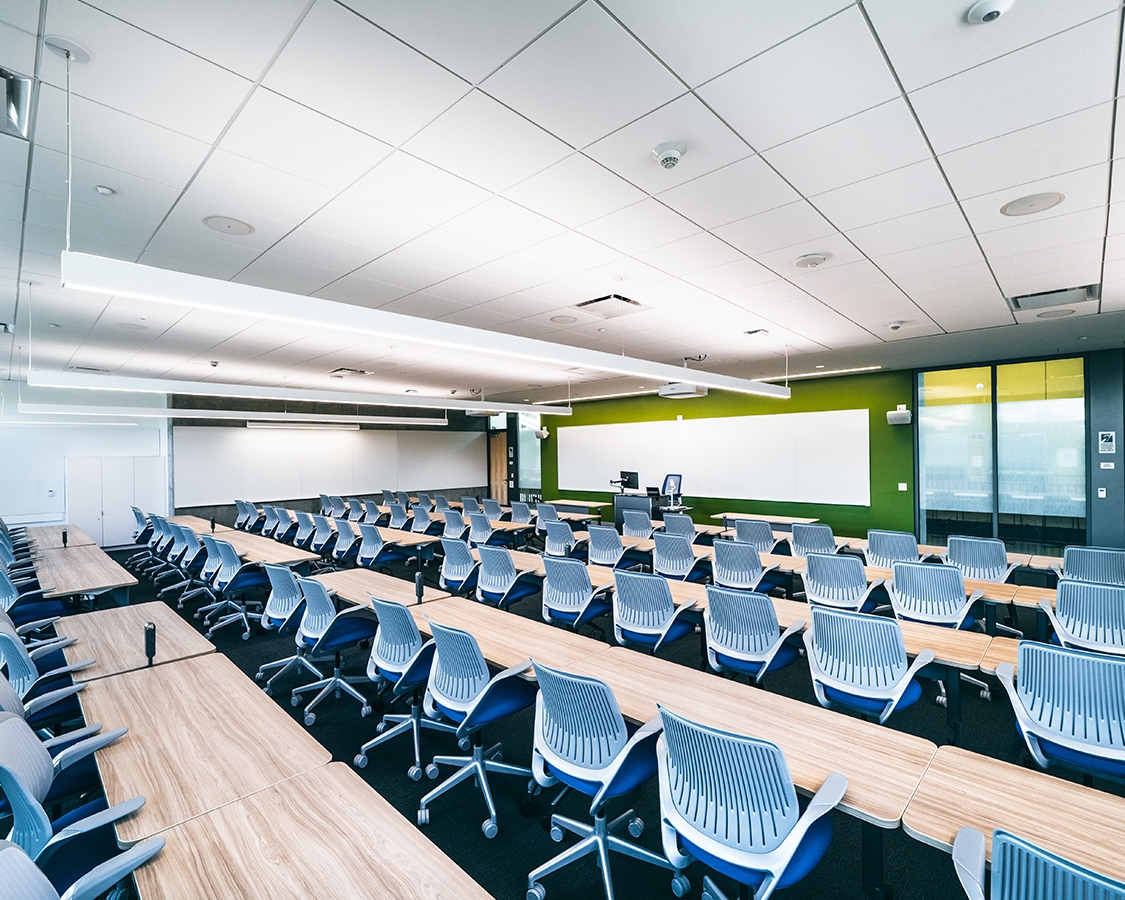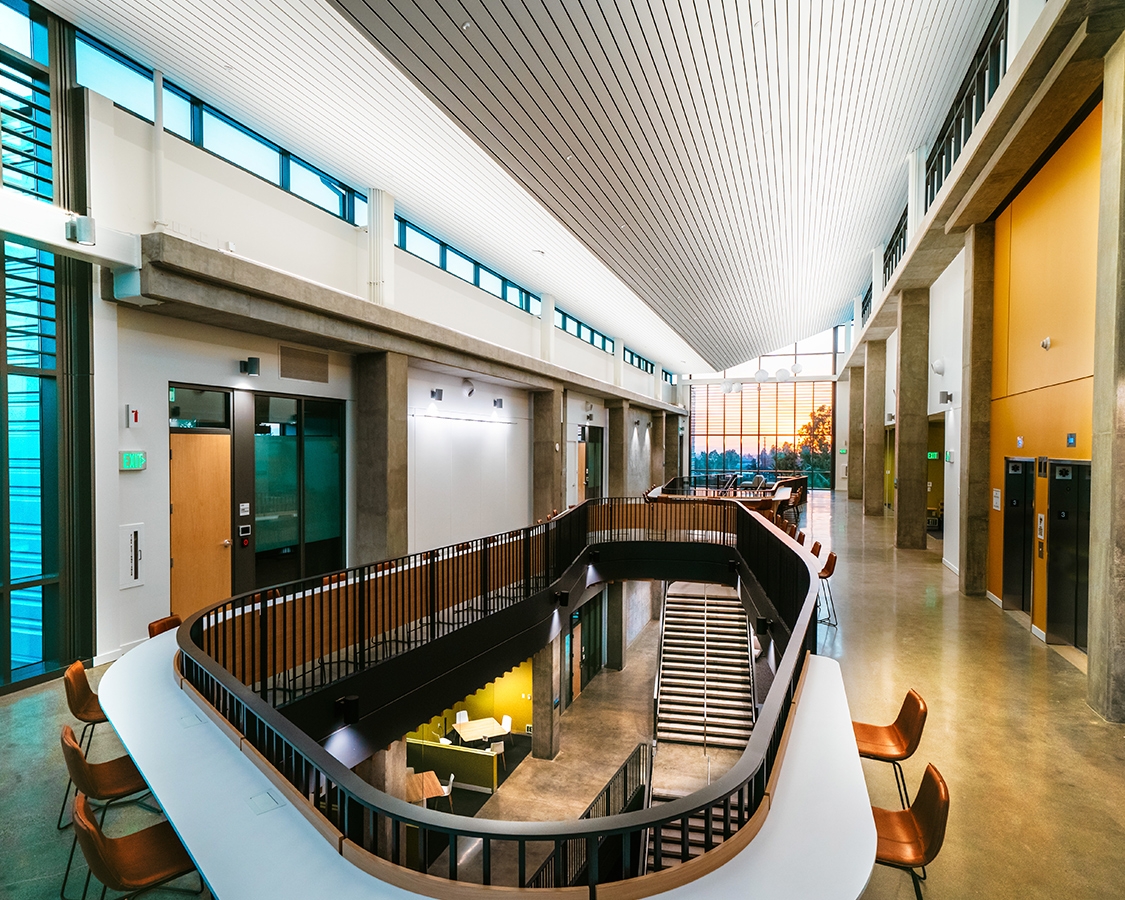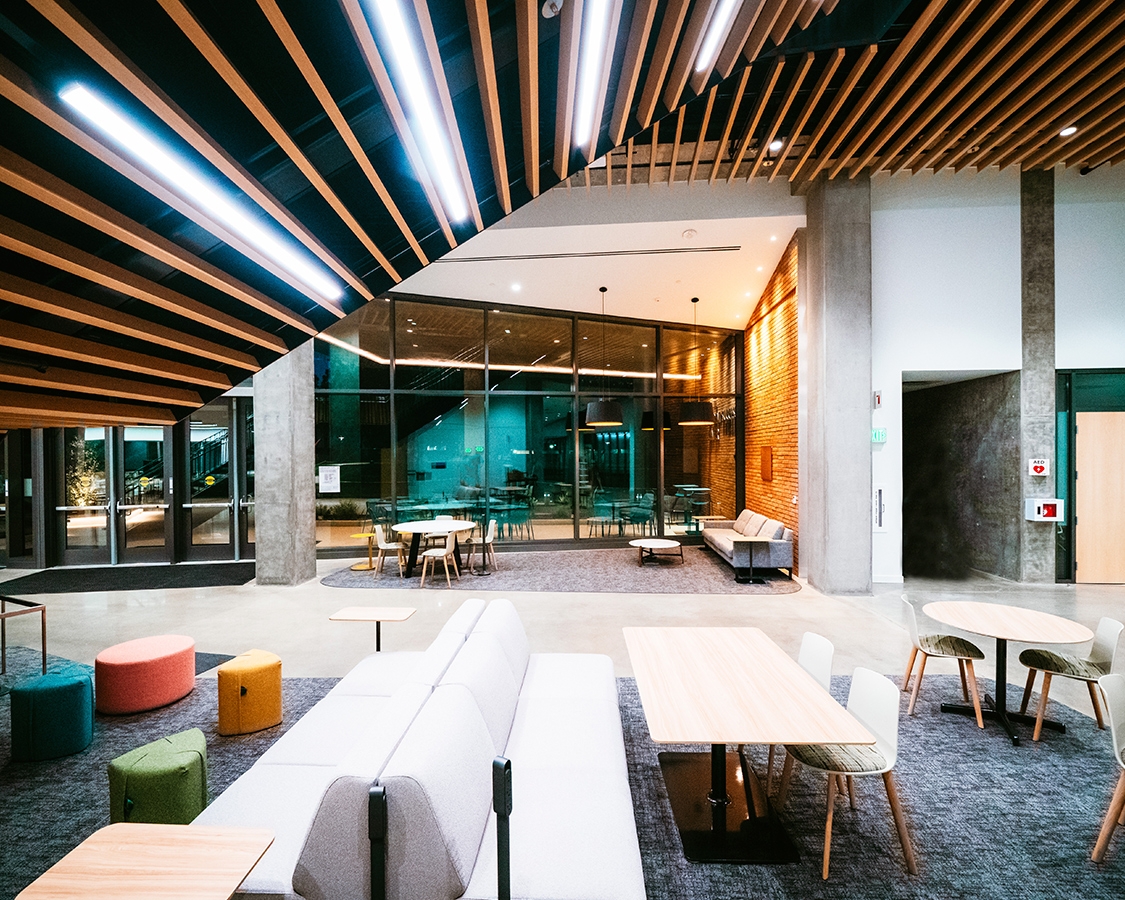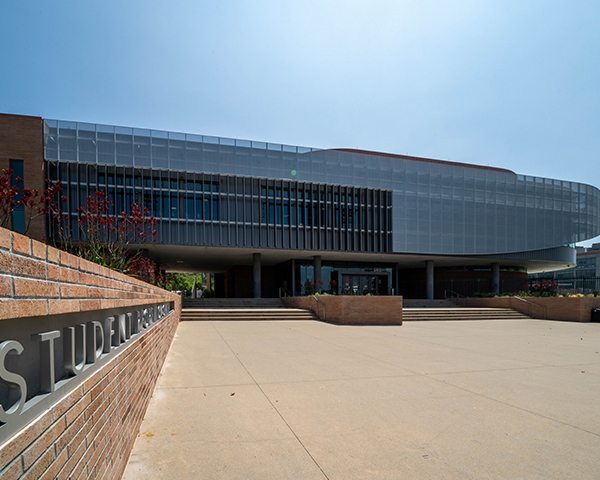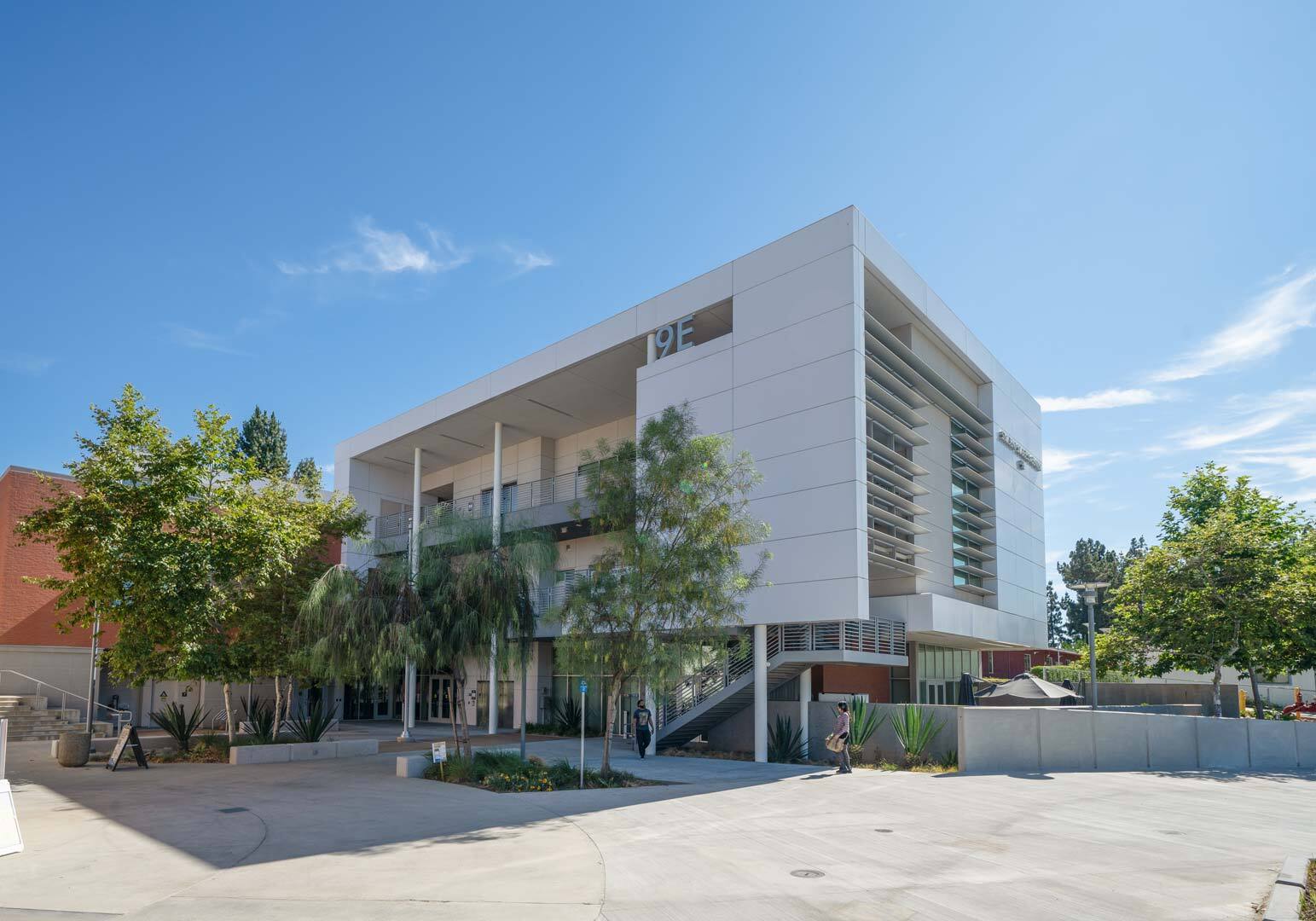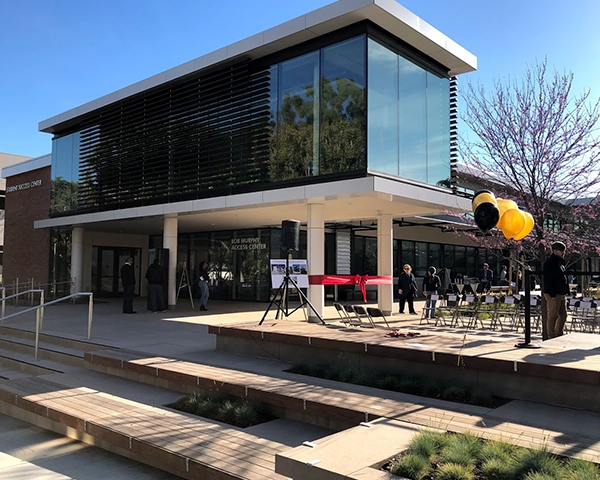UC Riverside
Student Success Center
-
Location
Riverside, CA
-
Size
62,000 GSF
-
Market
Public University
-
Awards
Engineering News Review, Award of Merit - Higher Education/Research, 2022
Design-Build Institute of America, Design-Build Awards 2022, National Award of Merit - Educational Facilities Category
San Diego Green Building Council, Sustainability Awards 2022 - Certified Project of the Year
IES SoCal Illumination Awards, 2023 - Award of Merit, Interior Lighting Design
LIT, Lighting Design Awards, 2023 - Energy Saving Lighting Systems
-
Project Overview
Read MoreThe new Student Success Center (SSC) at UC Riverside (UCR) is a 3-story, 62,000 GSF building comprised of general assignment classrooms for modern pedagogies and technology, multi-purpose student life spaces, and dining services. The building is intended to serve as a new beacon on the campus to support student and organizational success through active learning, collaboration, and community building. The project was intended to not only address UCR’s continued student growth and corollary shortfall of instruction space, but to do so in a manner that upholds UCR’s academic mission with an emphasis on reinforcing student success. This project was certified LEED Gold on July 28, 2022.
-
Solution
Read MoreFrom a sustainability standpoint, the team coordinated the construction materials to minimize loads within the building and choose climate appropriate solutions. These collaborative efforts allowed the team to minimize the infrastructure and maximize the usable square footage within the proposed footprint. The team worked to analyze every hour of operation to right-size the equipment and provide innovative solutions, some of which had not been utilized on the campus yet. To implement these systems, the team provided examples of where these technologies had been utilized for similar building types and clients. The building also features low-emitting materials that minimize concentrations of chemical contaminants that are damaging to indoor air quality, human health, productivity, and the environment.
Advanced energy modeling techniques were performed to evaluate the impacts of various energy conservation measures (ECMs). The project team evaluated the energy use intensity (EUI) impacts of multiple design strategies and integrated them with cost estimating from the contractor to understand the total benefits of the ECMs. In a number of cases, the team opted to move in a different direction. For those strategies that were employed, we used the following techniques:
-The project has several large lecture halls with occupancy ranging from 100-420 occupants, based on the room size. These lectures hall have high ventilation loads and raised flooring. For these spaces, we used indirect evaporative cooling and displacement ventilation to reduce the demands on compressor driven cooling. These strategies resulted in an EUI savings of approximately 4 btu/SF-year.
- For the large lecture halls, we provided four VAV zones, with the zone controls and reheat coils within the mechanical penthouse. This allowed us to eliminate any service within the space or the raised floor, to minimize the maintenance impacts to the space.
- The campus had an existing steam system that is failing and unreliable. The campus also has a requirement that we cannot have combustion for hydronic heating and domestic hot water. We used a modular heat recovery chiller to generate HHW for the building and export CHW to the campus loop. This strategy had a 7-point EUI reduction compared to the steam system.
- The project utilized a heat pump water heater for domestic hot water.
These solutions would not have been possible without collaboration of the building layout, envelope construction, shading, etc. to minimize the loads seen by the mechanical system. The contractor supported this collaboration by providing valuable input into the cost impacts of the strategies being proposed.





